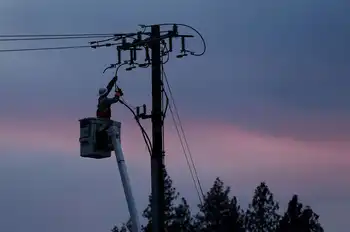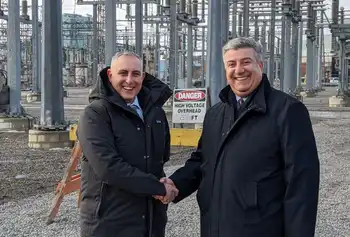Setting the record straight on Oakville station
By National Post
Arc Flash Training CSA Z462 - Electrical Safety Essentials
Our customized live online or in‑person group training can be delivered to your staff at your location.

- Live Online
- 6 hours Instructor-led
- Group Training Available
The procurement process overseen by the Power Authority on behalf of the Ontario government was designed to vigorously protect the interests of ratepayers and to operate independently. Four qualified applicants participated in the selection process, including the eventual selected proponent, TransCanada Energy Ltd. Each proposal was evaluated against a number of factors, such as environmental assessment, engineering design, construction arrangements and cost.
The proposals were evaluated by an independent team composed of Power Authority staff (who were not otherwise involved in the bid process) and third parties with expertise in the electricity sector. The chair was a third-party member with both electricity-sector and procurement expertise. All information was held by this bid evaluation team and at no time did I or any members of my executive team have access to the details of the evaluation.
The process was overseen by an external, neutral fairness advisor who ensured that the rules of the competition were followed but who played no role in TransCanada's selection.
The $1.2-billion, 900-megawatt plant that TransCanada proposes to build on a 15-acre site in an industrial area adjacent to the Queen Elizabeth Way is needed to provide power to the fast-growing Southwest GTA region. The peak demand for electricity in this area has grown more than twice as quickly as the provincial average. According to the Ontario Energy Board, Oakville residents consumed more electricity per household in 2008 than any of their GTA neighbours.
The new plant will also enable the elimination of coal-fired generation in Ontario. This initiative began with the closing of the Lakeview generating station, in Mississauga, in 2005. It will continue with the shutdown of Ontario's remaining coal-fired stations, whose emissions have an impact on the region, by the end 2014. This will reduce carbon dioxide emissions by up to 30 megatonnes and is one of the largest climate change initiatives in North America.
It's important to remember, however, that the closing of Lakeview removed 1,140 megawatts of local power, enough electricity for up to a million homes. That's why a new gas-fired plant is needed to ensure that there is a safe and reliable supply of power in the Southwest GTA, one of the most important economic regions in the province. It would not be responsible to build a plant elsewhere and deliver its power to the Southwest GTA because that would require building new high-voltage transmission lines, which would impact many other communities and mean hundreds of millions of dollars in additional costs that would have to borne by the ratepayers of Ontario.
It's important to note as well that emission standards at the plant will be 80% stricter than what the Ministry of the Environment requires. The government has acted on concerns about air quality by appointing a task force to develop a comprehensive plan to reduce emissions from industry, traffic and residences to improve air quality in the region.
In addition, the Power Authority will lead or participate in a variety of programs — worth about $30-million — to reduce energy consumption and to target emissions reductions at local industrial plants. This means that the Southwest GTA will have access to significant funds to enhance conservation efforts that will help improve air quality.











